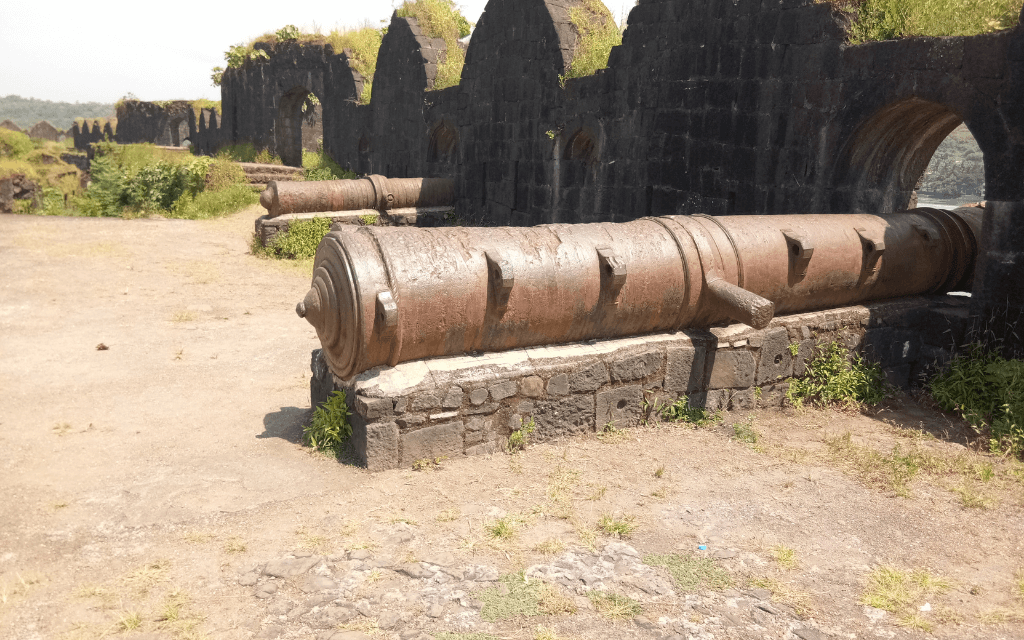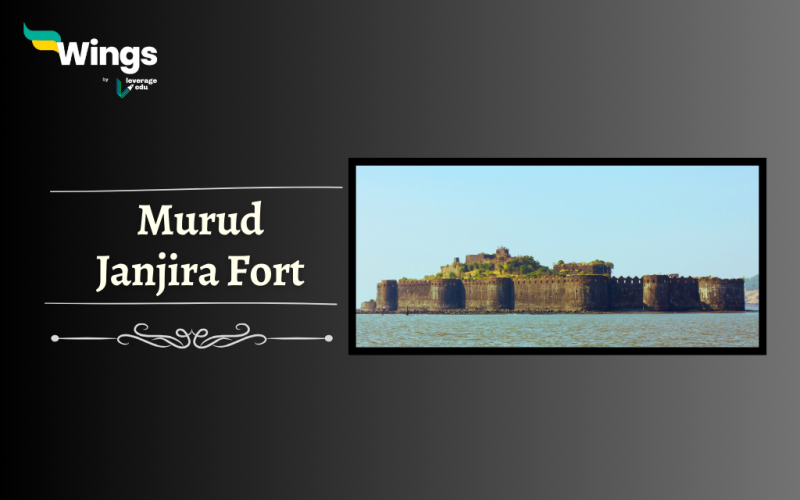Janjira Fort is also known as Murud Janjira Fort, which is situated on an island off the coast of Raigad district of Maharashtra, India. This magnificent fortress has witnessed centuries of history, withstood numerous attacks and remains an enduring symbol of grandeur without being captured even once. Let us delve into Janjira Fort history, exploring its features, facts, and significance.
Contents
History of Murud Janjira Fort
The real name of the fort is Jajire Mehrub. In the Arabic language, Jajire means “Island” and Mehrub means “Crescent”. It is also believed Murud comes from Habsan or Habshi who were the Abyssinians. The name Murud Janjira together comes from Konkon and Marathi words. “Morod” means peculiar in Konkani and in Marathi it means absent.
- Origins and Construction: Janjira Fort was built in the 17th century by the Siddis, an Abyssinian Muslim community that settled in the region. The fort was built as a defence against pirates who frequently raided the nearby Koli people.
The fort’s first commander, Ram Patil, was appointed by the Nizami Thanedar, the local Mughal official. However, in a cunning move, a rival named Piramkhan pretended to be a liquor merchant and gained Patil’s trust. Once inside the fort, Piramkhan’s forces launched a surprise attack and captured it.
Burhan Khan, another Siddi commander, later took over the fort and secured permission from the ruling Nizam to construct a permanent fortification. The current structure dates back to his rule.

In 1617, Siddi Ambar, believed to be the founder of the Janjira dynasty, received independent rule of the fort from the Mughal emperor. The Siddis were known for their maritime power and successfully defended the fort against multiple attacks, including one by the Maratha king Chhatrapati Shivaji.
Janjira remained independent until 1734 when it was captured by the Marathas under Chimajiappa, brother of the Peshwa Bajirao I. The fort remained impregnable for 117 years from 1617 AD to 1734 AD. But sson it was again regained by the Siddi Dynasty.
- Siddi Dynasty: The fort served as the stronghold and seat of power for the Siddi dynasty, who ruled over the Janjira Sultanate. The Siddis successfully defended the fort against numerous attacks by neighbouring kingdoms, including the Marathas and the Portuguese.
This impenetrable fortress remained for 330 years under the rule of Siddis. Nearly 20 Siddi rulers reigned from the fort and Siddi Muhammad Khan was the last Siddi king before the formation and merger of the fort into the Indian Union on 3rd April 1948.
Also Read – Chittorgarh Fort History: Features, Facts, Timings & More
Features of Janjira Fort
Janjira Fort is surrounded by the turquoise waters of the Arabian Sea and has nearly 19 rounded porches or arches. The fort’s imposing walls rise up to 40 feet in height, showcasing the craftsmanship of its builders.
- The palace within the fort exhibits rich architectural elements, including ornate ceilings and spacious courtyards.
- There are images of Burhankhana itself and a unique carving which shows four elephants captured by a lion in his claw and an elephant wrapped around his tail.
The wall also has a suggestion by Burhan Khan showcasing his attitude and sayings like – “ You may be an elephant, I am a Lion. Don’t you dare look askance at this fort”
- Janjira Fort had an ingenious water supply system that ensured a sustained source of fresh water for its inhabitants. Its intricate network of construction of deep wells and rainwater harvesting techniques showcased advanced engineering skills.
- The main entrance to the fort, known as the “Mahadarwaja”, is an impressive gateway flanked by bastions and guarded by a massive iron door.
- Janjira Fort’s formidable defence system included 26 bastions, cannons, and a labyrinthine layout to confuse the enemy.
- Hidden passages, secret chambers, and fortified walls added to its impenetrability, earning it the title of “the invincible fort”.

Interesting Facts about Janjira Fort
- Janjira Fort remained unconquered throughout its history.
- The Janjira Sultanate and the fortified port served as a major centre for maritime trade in the region.
- The fort’s inhabitants included people from different ethnicities, including Arabs, Europeans, and Siddi descendants.
- Even though it is surrounded by Salt water, a deep well of fresh water is still functioning inside the fort.
- It is believed that the fort had 572 guns and amongst them included the Kalal Bangdi, Landakasam and Chavari guns.

Timings of Janjira Fort
The timings for visiting the Monument and watching the mesmerising scene are –
| Purpose | Timings |
| Entry | 7 am to 6:00 pm |
| Week Entry | Everyday |
| Entry Fee | Free (but a boat ride must be paid to reach the fort) |
In conclusion, Janjira Fort stands the test of time with its resilience and the power of the Siddis. With its fascinating history, architectural wonder and impregnable fortifications, this island fortress continues to amaze and inspire all who set foot within its walls.
Also Read – Kumbhalgarh Fort History: Features, Facts, Timings & More
Other Attractions near Janjira Fort
| Murud Beach | Garambi Falls and Dam |
| Khokari Tombs | Ahmedganj Palace |
| Kasa Fort | Dattatreya TEmple |
Relevant Blogs
| Ellora Caves | Amer Fort History |
| 5 Most Famous Types Of Paintings in India | History of Fatehpur Sikri |
| Agra Fort History | Golconda Fort |
| Bhangarh Fort History | Red Fort History |
That’s all about Janjira Fort history! If you want to know more about topics like this, then visit our general knowledge page! Alternatively, you can also read our blog on general knowledge for competitive exams!
 One app for all your study abroad needs
One app for all your study abroad needs














